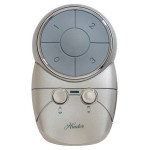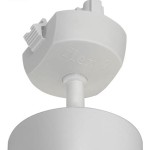Fluorescent Light Ceiling Fixtures: Essential Aspects to Consider
Fluorescent light ceiling fixtures are crucial components of contemporary lighting systems, illuminating commercial, industrial, and residential spaces. Understanding their essential aspects is paramount to optimize their performance, efficiency, and aesthetic appeal. This article delves into the key considerations when selecting and installing fluorescent light ceiling fixtures.
1. Light Output and Color Temperature
The light output of a fixture, measured in lumens, determines the brightness it provides. The color temperature, expressed in Kelvins, influences the perceived warmth or coolness of the light. For task-oriented areas like offices or workshops, a higher light output and cooler color temperature enhance visibility. Conversely, for relaxing environments like bedrooms or living rooms, a lower light output and warmer color temperature create a cozy ambiance.
2. Fixture Type and Design
Fluorescent light ceiling fixtures come in various types, each with its unique design. Recessed fixtures are mounted flush with the ceiling, providing a sleek and unobtrusive look. Surface-mounted fixtures protrude from the ceiling, offering more flexibility in placement. Suspended fixtures hang from the ceiling, creating a more industrial or modern aesthetic. Consider the ceiling height, room size, and overall design style when choosing the fixture type.
3. Energy Efficiency
Fluorescent lighting is inherently more energy-efficient than traditional incandescent bulbs. However, advancements in technology have led to the development of even more efficient fluorescent fixtures. Look for fixtures with high lumen-per-watt ratios, which indicate greater light output for the same energy consumption. Energy-efficient fixtures reduce operating costs and contribute to environmental sustainability.
4. Installation Considerations
Proper installation is crucial for the safe and effective operation of fluorescent light ceiling fixtures. Ensure that the fixture is compatible with the existing electrical system and that it is installed securely to the ceiling. Consider the fixture's dimensions, weight, and mounting requirements. Professional installation is recommended for complex or high-wattage fixtures to ensure compliance with building codes and safety standards.
5. Maintenance and Lifespan
Regular maintenance and cleaning are essential to extend the lifespan of fluorescent light ceiling fixtures. Periodically clean the fixture to remove dust and debris that can affect light output. Inspect the bulbs and ballasts regularly for signs of wear or damage, and replace them as needed. Proper maintenance ensures optimal performance and longevity, reducing the need for costly repairs or replacements.
Conclusion
Fluorescent light ceiling fixtures offer numerous benefits, from energy efficiency to aesthetic appeal. By considering the essential aspects discussed in this article, users can make informed decisions about the selection, installation, and maintenance of these fixtures to create well-lit and functional spaces.

Ceramic Industrial Fixture Light Power 10 W

How To Replace An Old Fluorescent Light Fixture Young House Love

Fluorescent Light Filters

Surface Mounted Light Fixture Office C Luce Recessed Ceiling Led Fluorescent

Ceiling Mounted Lighting Synthesis Cooper And Safety Fluorescent Tube Office Suspended

Prismatic Lens Vs Parabolic Louver For Office Lighting Make Great Light

Contemporary Ceiling Light String Std 1 Ateh Spo Linear Brushed Stainless Steel Fluorescent Tube

High Quality Light Covers Sky Ceiling Panels Led And Fluorescents

Commercial Lighting

Wipro Surface Mounted Fluorescent Light Fixtures 15 W
Related Posts








